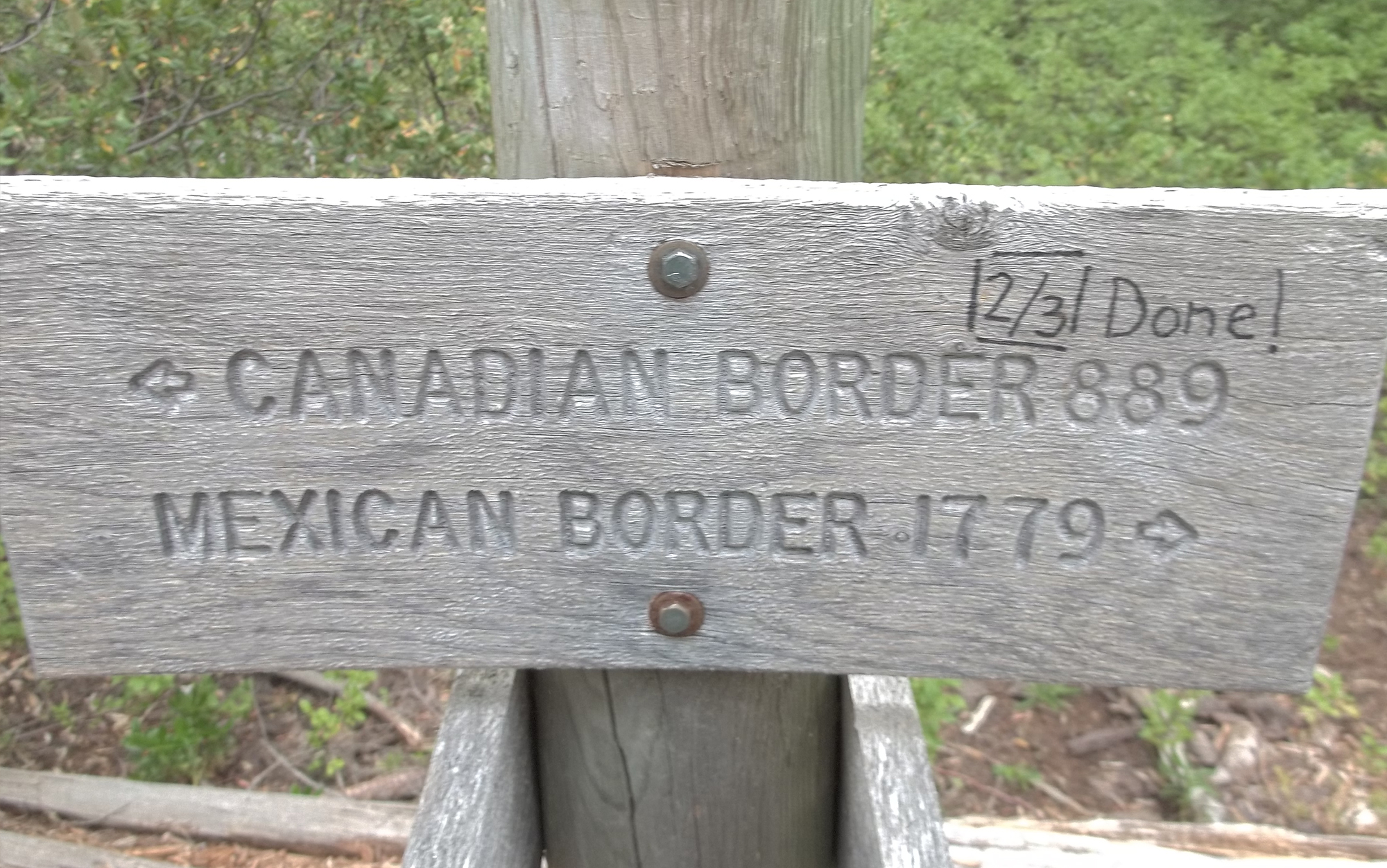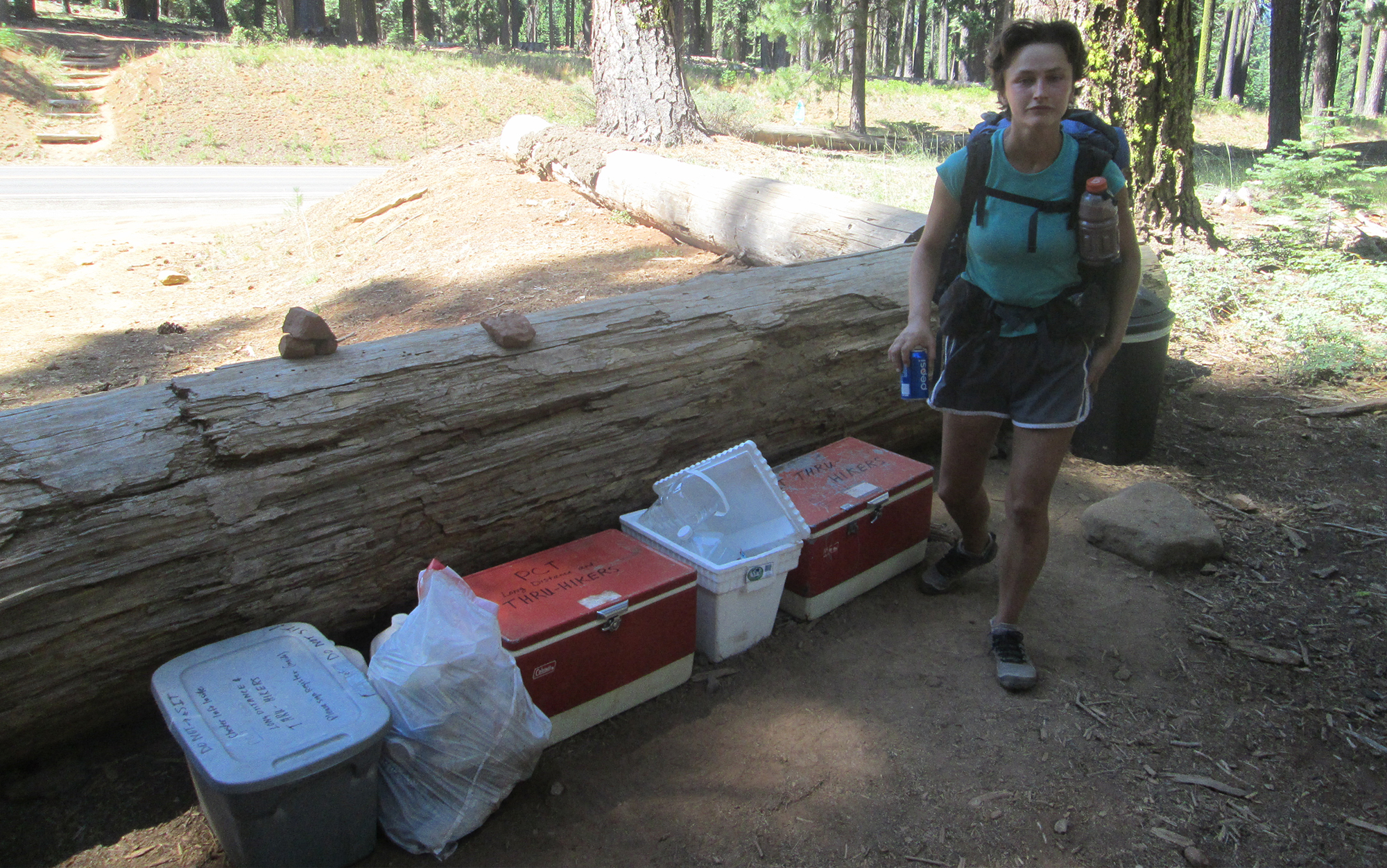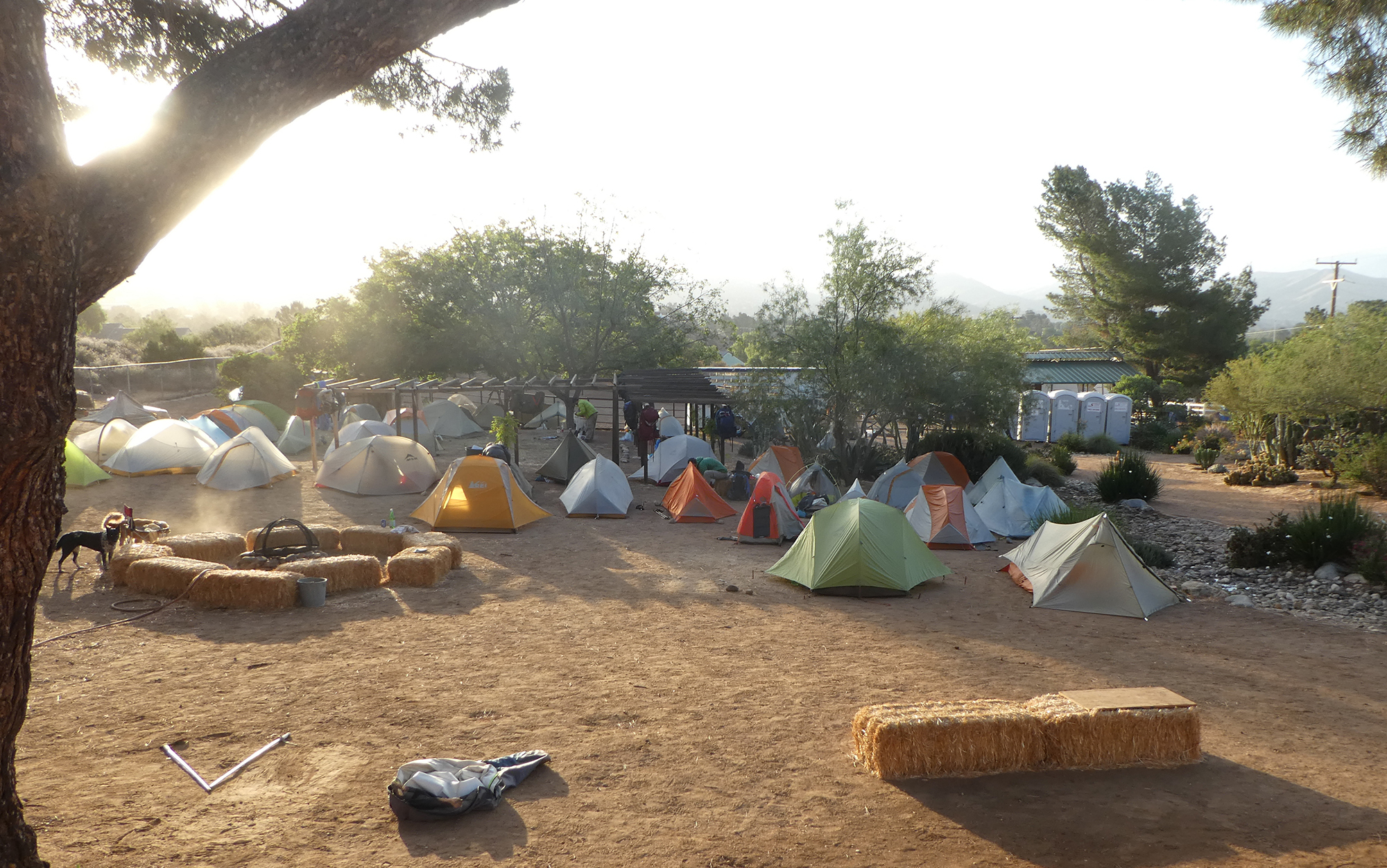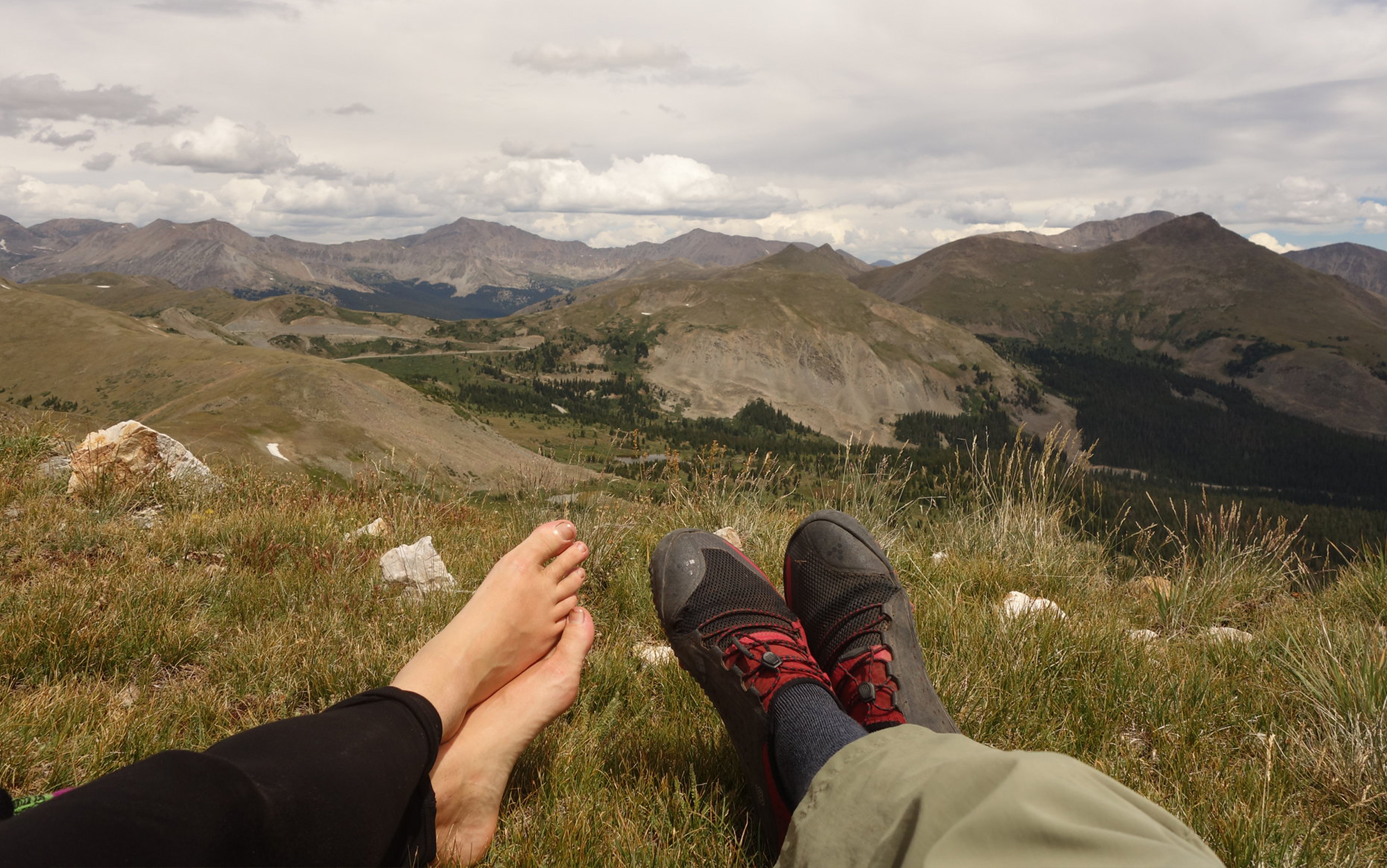We may earn revenue from the products available on this page and participate in affiliate programs. Learn More ›
It wasn’t that long ago that aspiring thru-hikers had to explain what, exactly, they were doing planning to hike something like the Appalachian Trail or Pacific Crest Trail. The kinds of distances involved (thousands of miles) and timeframes (months) are just hard to wrap your mind around. “Are you carrying all your food?” people would ask. “What about bears?” A common first reaction was simply, “I would never do that.”
These days, the concept of “thru-hiking” seems to have entered the zeitgeist, but there is still plenty of confusion over what, exactly, thru-hiking is and how to know if you are doing it. Do you need to be hiking a specific length of trail? Does it have to be an end-to-end hike? Does it need to be done all in one go? Do you have to have a sub 20-pound baseweight?
Here’s the deal: The length or type of trail and the weight of your pack are not what thru-hiking is. Put simply, thru-hiking is an approach to backcountry travel that prioritizes the experience of the trail itself over the destination. Are your current backpacking treks actually thru-hikes? Or, are you ready to try your first thru-hike? Read on to find out.
Why You Should Trust Me
Like a lot of people, I switched from backpacking to thru-hiking on a long trail: the Pacific Crest Trail, class of 2014. I then thru-hiked various other trails, including the Wonderland Trail (2015), Boundary Trail (2016), Colorado Trail (2017), and Oregon Coast Trail (section hikes 2018 to the present). I had a kid in 2019 and we take her thru-hiking whenever we can, including a 30+ mile chunk of the Wonderland Trail (2021).
In all that time, especially with having a kid, what I’ve learned is that thru-hiking is an approach, or even a state of mind, more than it is the actual hiking. Here are 10 signs that your backpacking trips are actually thru-hikes.
1. You’ve made some strange gear choices.
There are a few gear items that, when thru-hikers see them, they just know. No I’m not talking about ultra-light backpacks or the latest Dan Durston tent or even Altra Lone Peaks.

The gear that makes you instantly identifiable to thru-hikers is much more subtle (and a lot less expensive). It’s the three Smartwater bottles stuffed into the side pocket of your backpack, a Sawyer Squeeze poking out the top of one of them. The Dirty Girl Gaiters keeping the debris out of your trail runners so that you can keep racking up miles. The ratty off-brand running shorts. A white trash compactor bag poking up when you open your pack. Thru-hikers are, by nature, prone to experiment with whatever is at hand, whatever works. And a lot of times, those pieces of gear are easier to find in the hardware store or dollar store than in REI.
2. Your destination sounds a bit whimsical
One of the least discussed differences between thru-hiking and backpacking is in the meaning of the destination. When you’re backpacking, you typically have a sweet destination in mind. A serene mountain lake. A well-known backpacking camp. A beautiful waterfall. Thru-hiking destinations are … hazier. Canada. Around the mountain. Just following a route made by “Blisterfree.”

This gets at the heart of one of the biggest differences between backpacking and thru-hiking. Backpacking is about the destination. Thru-hiking is about the journey. If you’re focused on getting to camp, so that you can kick off your hiking boots and enjoy some R&R next to a perfect vista, then you’re probably backpacking. If you’re hiking into the evening hours and setting up camp in a protected bank of trees with no view, falling asleep soon after, you’re probably thru-hiking.
3. The route you’re on is signed with an acronym
A lot of the most popular thru-hiking routes are easily identifiable by their acronym: PCT, for Pacific Crest Trail. AT for Appalachian Trail. Some of these can get pretty obscure, such as GET (Grand Enchantment Trail), OHT (Ozark Highland Trail), or LASH (long-ass section hike).

If you’ve ever run across an experienced thru-hiker’s profile on social media, you’ll notice that they like to list all of these out, like a college degree or job credential. You should feel free to do this, too.
4. Someone gives you a trail name
Spend enough time in the backcountry and a strange feeling starts to settle in: Is anything outside of the trail real? Are you even the same person that you were a mere few weeks ago? The answer is no, which is why when your trail family tells you they are going to start calling you “Chop Chop,” you’ll agree to it.
There are no hard and fast rules about trail names. Yes, you can give yourself your own trail name—just try to avoid cliches like “Mountain Mama” or “Sunshine” or basically any animal. No, you don’t have to accept a trail name from someone else, even if they are a part of your trail family. Yes, you can change your trail name, although most people won’t want to.
5. You’ve stopped comparing yourself to other hikers
It’s a natural feeling: watching another backpacker sail by you on the trail, probably with an impossibly tiny backpack, and feeling a bit frustrated. Maybe you pick up your pace a little bit, maybe you grumble under your breath about how you like to enjoy yourself while backpacking. Once you start thru-hiking, though, you’ll stop doing this.

A common mantra among thru-hikers is “hike your own hike.” Some people are thru-hiking at two miles per hour. Some people are thru-hiking at four miles per hour. Both are fine. Neither is better or more authentic than the other.
6. The contents of your pack explode at every break
When I was only backpacking, I tended to be pretty neat. The only things out of my pack were what I was actively using. Maybe it’s because my old traditional backpacking backpacks had so many pockets to keep me organized. Maybe it’s because I had more energy for it. Regardless, it’s not true anymore.

For whatever reason, the ability to keep your corner of ground neat and clean goes out the window when you are thru-hiking. If I’m stopped for more than 15 minutes, half my pack is out. There is a ring of detritus around me when I’m cooking. A resupply stop looks like a bomb went off. And yet somehow, I can pack it all up again in minutes, and never lose a thing.
7. You experience trail magic
The most common form of trail magic consists of a cooler full of soda at a remote road crossing, left by a trail angel. It gives you a boost to kick out five miles to your camp for the night, or the excuse you needed to stop for the night early. The power of trail magic is so strong that even just the potential for it can increase your pace as you near a promising looking intersection on your route.

Trail magic can take many forms, from that simple cooler on the side of the road to entire houses set up for thru-hikers at opportune junctures. It can be planned out, or it can be spontaneous, the result of a stranger wanting to contribute—and share in—your journey.
But here’s the thing about trail magic: You have to be open to it. You have to open the cooler and take the soda. You have to share with strangers who ask what you are doing. You have to tell them what your challenges are, and what you need. And when a schoolteacher basically tells you that you are going home with her to get a shower and three square meals, you have to agree to this. (Thanks again, Sue.)

Being open to the generosity of your fellow man and the ways in which the universe takes care of you in unexpected ways is such an integral part of thru-hiking that there’s a phrase for it: “The trail provides.”
8. You have a hitchhiking strategy
Of course, the trail provides best when you kind of coax it along. There is no scenario where that comes to the forefront more than when hitchhiking. Thru-hikers are not only comfortable thumbing for a ride to the nearest trail town, but typically have a whole strategy built out around it.
There’s the time of day you want to be on the road. The type of car you’ll make an extra effort to get the attention of (pickup trucks). And the kind of car you won’t even bother getting up for (RVs). The correct level of general enthusiasm (just a thumb? A wave and a smile?). If you have a short message written out on your bandana, you are definitely thru-hiking.
9. You have the hiker hobble
Whether you are backpacking or thru-hiking, no part of your body will suffer more than your feet. The repetitive grind of pounding out miles, day after day, just takes its toll. But the type of abuse backpackers and thru-hikers inflict on their feet is different.
For backpackers, the number one challenge is blisters. Blisters on your heel, blisters between your toes. They start out as an annoyance, but can morph into infected, trip-ending pus if you aren’t careful. Strategies for dealing with blisters vary, and are a top conversation topic among backpackers.

Thru-hikers’ feet are a little different. First off, after about 500 miles or so, blisters stop being a problem. There are a few reasons for this. Thru-hikers have developed some basic care techniques that work for their feet—airing them out on the regular at breaks, wearing only the best wool socks, soaking them in epsom salt baths in town whenever they start to get soft or develop hot spots. (I tend to think that thru-hikers’ feet also just eventually give up forming blisters.) Similarly, they’ve also figured out what shoe/trekking pole/gait strategy works for them, so they know how to avoid the more mechanical injuries like plantar fasciitis or Achilles tendonitis.
Read Next: The Best Thru-hiking Shoes
But that doesn’t mean that thru-hikers’ feet feel great. They feel terrible. All the time. And it’s the worst when they first stand up and get moving. What’s happening here is that the repetitive grind of day-in day-out pounding out miles coupled with the vitamins/mineral deficits common among thru-hikers is wearing down the connective tissues in their feet. (This is also in large part why their feet get so big.) They’ll recover once they get off trail and commit to doing nothing for an extended period of time, but until then, a bit of a hobble is to be expected.
10. You fall into a major funk at the end of your trip.
The end of a big backpacking trip can spark a number of emotions: Relief at being home. Sadness at the end of a long journey. Feeling reenergized for day-to-day life. Nostalgia for the memories you made. But if you find yourself experiencing something more than that, perhaps the sensation that the “real world” is the world of the trail, and you are now trapped in a simulacrum involving a 9-to-5 job and family obligations, then you might be experiencing post-hike depression. Post-hike depression is a well-documented phenomenon among thru-hikers.
While there have been a few attempts to more scientifically document what post-hike depression is and why it happens, most hikers see it as resulting from a number of factors: the lack of a single unifying purpose, missing out on those regular exercise endorphins, the reintroduction of front world responsibilities like “bills,” and the reality that Snickers bars are no longer the foundation of your day-to-day diet.
If at the end of your trek you find yourself struggling to relate to your friends and loved ones, reintegrate into your regular routines, or even get out of bed in the morning, know that you are not alone. Also, in case you were still wondering, you were definitely thru-hiking.
Find Your Thru-Hike
For plenty of people, thru-hiking will always mean hiking one of America’s top long trails. Here’s a round up of some of the most popular options, all at different lengths, levels of difficulty, and remoteness, so that you can find the one that’s right for you.
The Triple Crown of Thru-Hiking
These three long trails are The Long Trails of thru-hiking. Hiking all three is completing the triple crown of thru-hiking. All three in a calendar year is a Calendar Triple Crown, and should only be attempted by only the most experienced, physically fit thru-hikers.
- Appalachian Trail (AT): 2,194 miles
- Pacific Crest Trail (PCT): 2,654 miles
- Continental Divide Trail (CDT): 3,100 miles
Less Popular Quit-Your-Job Thru-Hikes
During the best times of years to hike them, the triple crown trails can get pretty crowded—and not everyone is looking to find a “trail family” out in the wilderness. If you’re quitting your job and taking the plunge for some extended wilderness solitude, check out these options instead:
- Pacific Northwest Trail (PNT): 1,200 miles
- Arizona Trail (AZT): 825 miles
- The Hayduke Trail (the Hayduke): 812 miles
Ask for a Sabbatical Thru-Hikes
Five to six months is a lot to ask for time off to go hiking, and most people don’t even try. But a month? That just might be doable. These are my top picks for thru-hikes that you can head out on by taking an extended leave of absence.
- Colorado Trail (CT): 483 miles
- Oregon Coast Trail (OCT): 362 miles
- Long Trail (LT): 272 miles
Use All Your Vacation Days Thru-Hikes
Good news: Some of America’s oldest and most scenic long trails can be tackled in two weeks flat.
- John Muir Trail (JMT): 211 miles
- Tahoe Rim Trail (TMT): 165 miles
- Wonderland Trail (WT): 93 miles
READ NEXT: Best Thru Hiking Backpacks
FAQs
Q: What is the difference between thru-hiking and backpacking?
At its most basic, thru-hiking is about prioritizing the experience of the trail when you are on multi-day treks through the backcountry, while backpacking is about prioritizing the destination (typically a sweet campsite).
Q: What is the most difficult thru-hike?
Its combination of remoteness, terrain difficulty, and sheer length make the Continental Divide Trail the most difficult thru-hike overall.
Q: Can beginners hike the Appalachian Trail?
Yes, beginner backpackers can hike the Appalachian Trail. If you have limited (or no) experience backpacking, be open to accepting advice from the other hikers around you, and changing out gear that isn’t working as you go. If you’re interested in hiking the Appalachian Trail and are wondering what is involved, the Appalachian Trail Conservancy is a great place to get started.
Q: Is thru-hiking hard?
Yes, thru-hiking is hard.
Q: What classifies as a thru-hike?
While there is not a tried and true definition of a thru-hike, they typically share a few characteristics: A route that is focused more on the type of terrain it takes you through than on an end destination. A trek that stretches and pushes your limits. Thru-hikes are often also a so-called once-in-a-life trip—although many first-time thru-hikers will be inspired to take other such trips after that first one.
Q: What is section hiking?
Section hiking refers to tackling a long trail, such as the Appalachian Trail or Pacific Crest Trail, in chunks, over the course of several years.
Final Thoughts on Thru-Hiking
While thru-hiking is a term most commonly associated with major long trails like the Appalachian Trail, Pacific Crest Trail, and Continental Divide Trail, it has evolved over the years to mean something more than that. As ultralight backpacking gear has taken hold, with more and more brands focused on gram-counting entering the mainstream, thru-hiking has begun to emerge as its own distinct approach to travel through the backcountry. If you’ve been hesitant (or resistant) to using the term thru-hiking to describe your own adventures, it’s time to take a second look.
